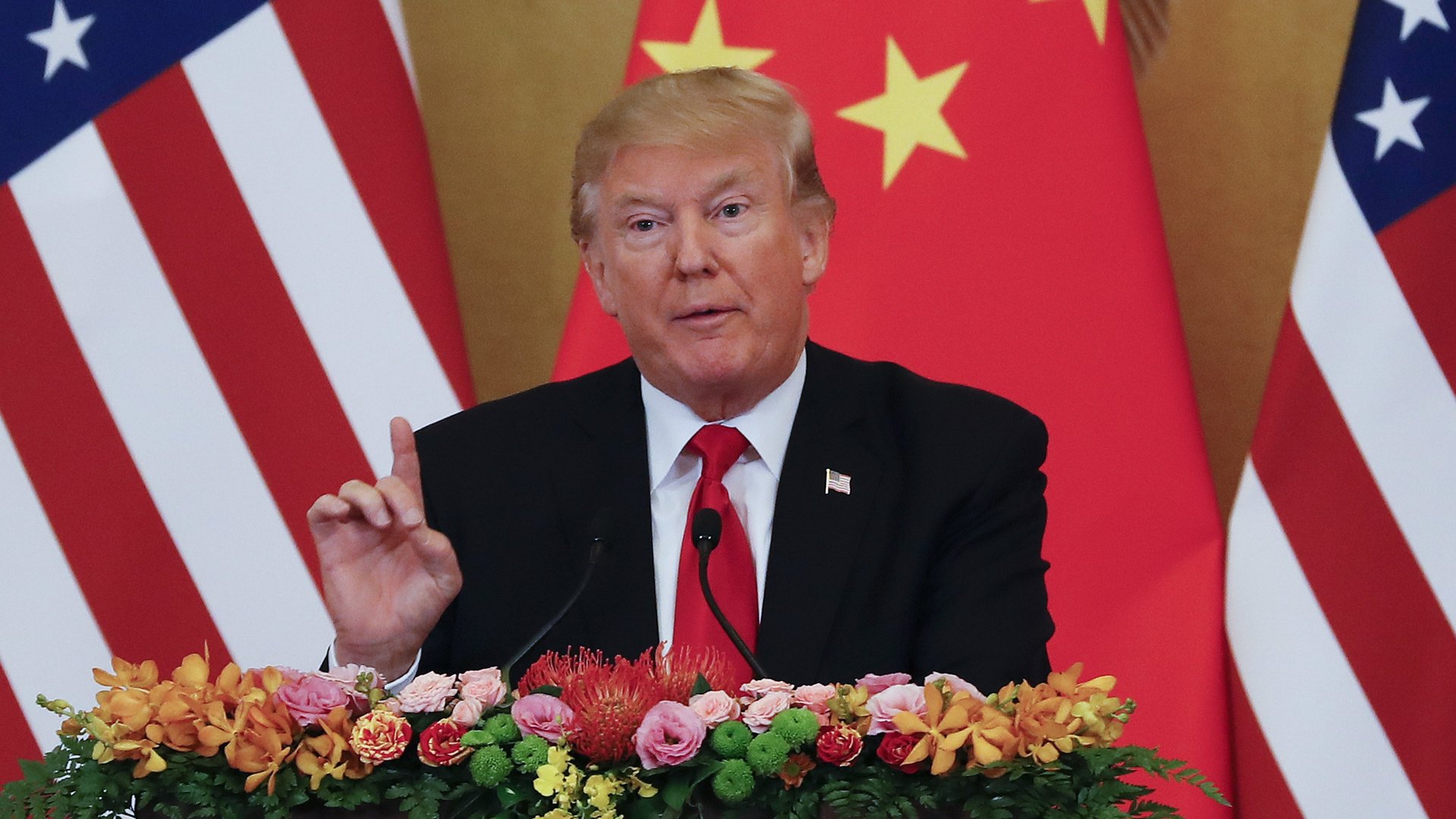The burgeoning US-China trade war has entered a new phase
Yesterday (June 18), the Trump administration threatened new tariffs on $200 billion of imported Chinese goods each year. The US says the new tariffs, which would be set at a rate of 10 percent, are in response to tariffs from China last week on $34 billion in US goods at a 25 percent rate.


Yesterday (June 18), the Trump administration threatened new tariffs on $200 billion of imported Chinese goods each year. The US says the new tariffs, which would be set at a rate of 10 percent, are in response to tariffs from China last week on $34 billion in US goods at a 25 percent rate.
In turn, China says their new import taxes are in response to an earlier set of tariffs by the US, also of $34 billion at a 25 percent rate. Both countries’ $34 billion tariffs are set to go into effect July 6.
This is what a trade war looks like.
China’s commerce ministry called the additional $200 billion in import taxes “extortion” and promised to “fight back forcefully” (paywall). The ministry also expressed its disappointment that the new tariffs do not reflect the “consensus” the two countries had come to during recent trade negotiations, after which China declared the trade war was over. Markets were unhappy too, with riskier assets seeing a sell-off in the wake of the administration’s threat.
The new US tariffs take what had been a trade spat that appeared to be calming to the next level. In 2017, the US imported about $506 billion in goods from China. Already, about $208 billion of those goods were subject to some form of import tax. Slapping tariffs on $200 billion more in goods, in addition to the $34 billion already set, would likely mean that almost all Chinese products would face some import tax—though this depends on whether or not the new tariffs are on goods already taxed.
If the US goes ahead with the new $200 billion tariffs, they are more likely to be directly felt by individuals than the previous round. For the initial $34 billion the US attempted to avoid putting tariffs on commonly purchased consumer goods, like clothing and TVs, so that they did not become more expensive. Rather, the tariffs were focused on industrial products, like circuit breakers and aircraft parts. The next round will almost certainly have to tax some consumer goods to reach the $200 billion target, perhaps making them less politically palatable.
US politics may restrain Trump. The US Chamber of Commerce, a powerful pro-business lobbying group that historically supports Republicans, has condemned US tariffs against China. The chamber claims they unfairly harm businesses that rely Chinese products, and will destroy over 100,000 American jobs.
Certainly the $34 billion in goods that each side will targeted from July 6 is less than it could have been—both sides threatened in the vicinity of $50 billion.
In announcing the possibility of new $200 billion in tariffs, Trump mentioned that he still has an “excellent relationship” with Chinese president Xi Jinping. If the trade war escalates, and destabilizes the global economy, the good vibes might not last much longer.